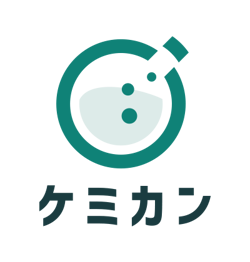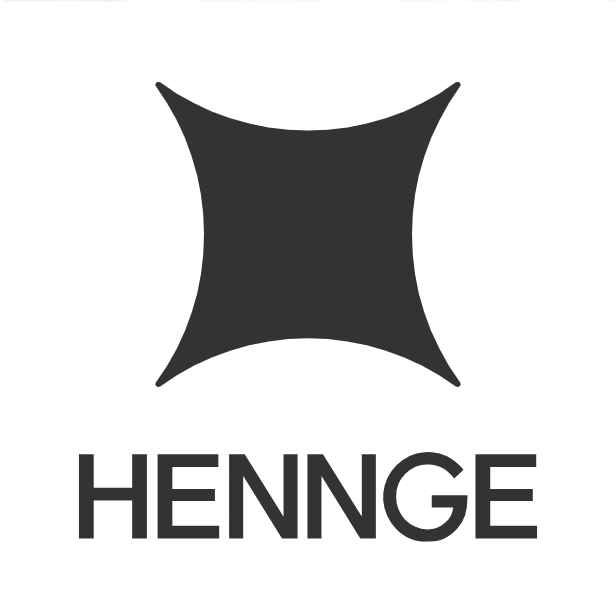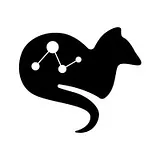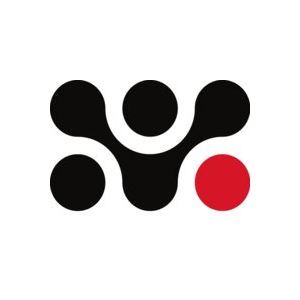Updated April 3, 2025
Japanese trading companies: Here's what you need to know [2025 guide]
Japan is known for a lot of things: good food, great anime, and cutting-edge technology, but did you know that Japan also has a very unique business culture?
Considering Japan’s history of innovation, this comes as no surprise. Still, Japanese trading companies, also called general trading companies (sogo shosha),are a big part of this culture as distinct business structures that are unique to Japan.
These companies played a big role in Japan’s economic growth after the Second World War, and they continue to thrive in today’s economy. They are also quite popular among new graduates and job seekers in Japan due to the high salaries they tend to offer.
However, unless you’re an investor, a business-savvy person, or Japanese, chances are that you haven’t heard of general trading companies before, as there’s little to no knowledge of these companies outside of Japan.
In this post, I’ll explain what Japanese trading companies are, the history behind them, and why they’re important today. I’ll also talk about some of the most prominent Japanese trading houses in Japan.
Let’s get right into it.
What Are Japanese Trading Companies (Sogo Shosha)?
As I mentioned briefly in my introduction, a general trading company, or sogo shosha, is a business model that’s unique to Japan. Essentially, these companies engage in trade activities involving a wide variety of products and industries.
Due to the diversity of the products being traded, Japanese trading companies generally don’t belong to a single industry. Ultimately, this is what sets them apart from regular trading companies you’d come across in other countries.
While it’s somewhat common nowadays for companies in the global business arena to describe themselves as general trading companies, the reality is that most of these companies only do wholesale distribution. Thus, they aren’t exactly considered sogo shoshas in the traditional sense.
At its core, a sogo shosha’s business practices are much more unique. These companies not only diversify the products and materials they trade in, but they also diversify their capital by having balances in various currencies, which allows them to manage risks while trading internationally.
It’s In The Name: Sogo Shosha (総合商社)
Sogo shosha is often directly translated as a “general trading company.” However, according to a study by Marubeni Research Institute, this translation doesn’t do the unique company structure justice. This becomes even more apparent when we look at the kanji characters that represent sogo shosha (総合商社).
The character that represents the first syllable “so” — which is “総” — is supposed to look as complicated as it does because that’s what it refers to. Even though it’s usually translated as “general,” it actually translates into “all-encompassing.”
Combined with the second symbol “合” (go), the translation of the word “sogo” actually means something that’s more along the lines of “combining a diverse variety of functions and products.”
With this more accurate translation, it suddenly becomes easier to comprehend what sogo shosha means — “diversified trade conglomerate” — and is definitely more self-explanatory than “general trading companies.”
Now, let’s briefly explore the history and origin of sogo shoshas in Japan.
The History of Sogo Shosha in Japan
While the activities of the modern general trading companies that are known today started to be influential after the Second World War, the origin of the company structure actually dates back to the 1800s.
The company structure that’s the predecessor of sogo shoshas, known as zaibatsu, first came about at the end of the Edo period, the period when the control of the military government in Japan ended, and the country changed its foreign isolation policy.
As Japan opened up to foreign trade in the mid-1800s, these family-owned corporate giants, zaibatsu, played a big role in the import of essential raw materials, such as cotton, into Japan and served as middlemen in foreign trade.
After World War II, the zaibatsu, the most notable of which are Mitsubishi and Mitsui, became general trading companies in the 1950s, and new ones have popped up as well. Together, these companies helped expedite the economic growth of Japan in a major way.
Although the first sogo shoshas in Japan started out by trading raw materials, companies began trading finished products soon after as well.
Today, as I’ll get to in a bit, there are seven major sogo shoshas in Japan, and they take a much more direct approach to international trade. They mainly do business in logistics, financing services, transportation, insurance, etc.
Why Japanese Trading Houses Are Important For Japan

With an understanding of the historical background, it’s actually easy to understand why sogo shoshas are so important to Japanese society.
For one, the role of general trading companies in the economic development of Japan is simply undeniable. During the ‘80s, when Japan boasted one of the world’s largest economies, more than one-third of the total international trade done by the country was handled by the nine biggest sogo shoshas of Japan at the time.
Due to these companies playing a big role during one of the best financial periods in Japan’s history, it’s no wonder that general trading companies are deemed as important as they are by Japan’s general public.
Another reason why sogo shoshas are regarded as so prestigious in Japan is that these companies are also known to be the highest-paying businesses in Japan.
Due to the amount of money sogo shoshas make, these mega-corporations offer top-notch salaries and competitive benefits to candidates, and new graduates are still lining up to score an interview at one of Japan’s sogo shoshas.
Speaking of companies with high salaries, I have a detailed guide on the Japan Dev blog, where I talked about software developer salaries in Japan extensively. Additionally, my post on finding the salary range for any job you want is also a great resource you can utilize on your job hunt.
The Structure of a Sogo Shosha
While it’s clear from the explanations above that general trading companies have quite the significance in Japan, what precisely these businesses do may not be as clear. We’ll get to that in a bit.
As the name suggests, though, a general trading house is a trading company at its core, but what sets it apart is the structure of the business and the heavy involvement of investments.
Structurally, sogo shoshas are group companies that consist of tens or hundreds of smaller companies. However, these companies can’t technically be considered subsidiaries of a “parent company.”
This is because these smaller companies actually have a cross-ownership system where each one owns a majority of another. Therefore, the companies that make up a general trading company are merely involved with one another rather than being owned by a single entity.
While this structure is unique to sogo shoshas, it should be noted that this type of cross-ownership system is prohibited by law in some countries like the U.S. due to being against some of the fundamental principles of competition law.
However, in Japan, sogo shoshas aren’t dominant in any specific industry, and this has been the case for hundreds of years. It’s actually been good for the country’s economy, as well as the business scene, because each sogo shosha is involved with one another’s success in various industries, akin to having a “non-written contract” of alliance to move industries forward.
This is another reason why sogo shoshas are so respected in Japan, so working at one of these companies might even be deemed more valuable than working at a FAANG (Facebook, Apple, Amazon, Netflix, and Google) company by many.
Main Business Functions of a Sogo Shosha
As I mentioned, another thing that sets sogo shoshas apart is the heavy involvement in investment. While it might sound like trading is all a “general trading company” does, a sogo shosha’s main business activities actually consist of both trading and investment.
Japanese trading companies are involved in the trade of various types of products spanning multiple industries, and some are also involved in raw material trade as well. Most companies nowadays are even involved in value-added services in the fields of insurance, logistics, and plant development.
In addition, sogo shoshas are also heavily involved in investment, and in this sense, they are more akin to private equity funds.
However, while this comparison is understandable due to private equity funds being investment partnerships that acquire and reform failing companies, it should be noted that sogo shoshas’ investment activities are much more well-informed and diversified into several industries.
These companies also make use of their wide-reaching business network by utilizing human resources to seek out new investment opportunities.
All in all, we do agree that explaining the main business functions of Japanese trading companies as such might have left you with more questions than answers, so let’s take a look at some examples to paint the full picture.
Major Japanese Trading Houses

Let’s now take a look at the seven major trading houses in Japan and the fields in which they operate so that you better grasp the all-encompassing lines of business they have.
Mitsubishi
Mitsubishi Corporation was established in 1918, and it’s Japan’s largest trading company. Although the company has been a general trading house since 1918, its roots can be traced back to as early as 1871, when the company provided a government-backed mail service.
The conglomerate currently has over 80,000 employees, and its businesses are diversified into ten segments. Out of the ten, the company is the most active in the machinery, energy, finance, banking, and chemicals industries.
Although the company is prominent in all of these fields, most of the company’s net income comes from its endeavors in the energy industry.
The company is a public kabushiki gaisha, which means that it’s a stock company.
Itochu
Similar to Mitsubishi, Itochu Corporation also had its beginnings — in 1858 — way before it was refounded as a trading house. The company has served as a trading house since 1949.
Out of all the largest trading houses in Japan, Itochu is different in that it wasn’t part of a Zaibatsu group, which is the predecessor of general trading companies that originated in the pre-World War II period.
Even though the company is well-known for its endeavors in the textile industry in China, it operates in several other industries, such as machinery, minerals/metals, food, and energy.
The company has over 100,000 employees across all of its subsidiaries.
Mitsui
Mitsui & Co is a part of the Mitsui Group, and it was first established in 1876. It was later dissolved during the period of World War II but re-established in 1947 under the name Daiichi Bussa Kaisha.
The company played an important role in many natural resource projects throughout Japan’s history. Its business activities today span six industries, with energy being the most prominent one.
Mitsui is still currently involved in many natural resources projects, such as a wind farm project in Australia and a biofuel project in Brazil.
The company is also active in the fields of metal, machinery, chemicals, corporate development, and lifestyle. They currently have over 5,500 employees.
Sumitomo
Originally founded in 1919 as the Osaka North Harbour Co., Sumitomo Corporation is one of the top three major general trading houses in the world.
The company is a part of the Sumitomo Group, which dates back to the 17th century. Although the company was mostly involved in real estate management and land acquisition in the beginning, it now operates in several industries.
Similar to Mitsubishi and Mitsui, the company is also mostly prominent in the energy and natural resource industries today. However, it’s also active in transportation and railway, machinery, and finance.
The company currently has over 70,000 employees.
Marubeni
Marubeni Corporation was originally founded in 1858 as a linen trading company and was later reformed in 1921 to trade in various types of products and materials.
Marubeni has the leading market share in the cereal business in Japan, as well as paper pulp trading and the industrial plant business. However, the company is also active in various other industries.
Marubeni groups its areas of business under six main segments: food, agriculture, and chemicals; energy and metals; consumer products; transportation and industrial machinery; and power infrastructure.
The company has over 45,000 employees currently, with 58 overseas offices, 29 subsidiaries, and 12 offices in Japan.
Sojitz
Sojitz Corporation was formed as a result of a merger between two businesses, Nissho Iwai and Nichimen, in 2004. However, both companies’ origins date back to the early 1900s.
In the merger, the company went for the name Sojitz, as the term translates into “two suns,” symbolizing a merger of equals.
Sojitz’s business activities are largely in the aircraft production industry, but the company also works in the chemical, food, minerals/metals, and natural resource industries.
The company also has large investments in consumer goods and industrial parks industries. There are 440 subsidiaries of Sojitzs, and the company has over 14,000 employees.
Toyota Tsusho
Originally established under the name Nisshin Tsusho Kaisha in 1948, Toyota Tsusho Corporation came about as the trading division of the dismantled Toyota Zaibatsu of the pre-World War II period.
Although the main endeavors of the company are in the automobile industry, the company is also active in a diverse, large number of other industries.
In addition to the automobile industry, Toyota Tsusho has six other business divisions: metals, food and consumer services, chemicals and electronics, global parts and logistics, machinery and energy, and strangely, Africa, which is dedicated exclusively to investment projects in Africa.
The company has head offices in Nagoya and Tokyo and over 50,000 employees.
Conclusion

It’s true that a general trading company is a company structure that’s unique to Japan, but this doesn’t mean that there aren’t contemporary examples in other countries/regions of the world.
General trading companies, or sogo shoshas, are characterized by their diverse investments in various industries, but there are also other company structures in the world that are very similar.
For instance, the group company structure that exists in South Korea shares many similarities, but it was created to be similar to sogo shoshas in the first place. More importantly, it provided the same results for South Korea’s economic development, despite evolving many structural distinctions, different from “the blueprint” of sogo shoshas.
Similar company types were also established in China due to the success of Japan, which also promoted economic growth in many industries. Another attempt from the U.S. in the ‘80s was also made, but it never became popular.
As you see, other examples of general trading companies in the world might have all been influenced by sogo shoshas of Japan in some way, shape, or form. However, the industry balancing effects and the harmonious existence of these companies remained exclusive to Japan due to the country’s culture of unity and solidarity.
Get Job Alerts
Sign up for our newsletter to get hand-picked tech jobs in Japan – straight to your inbox.








